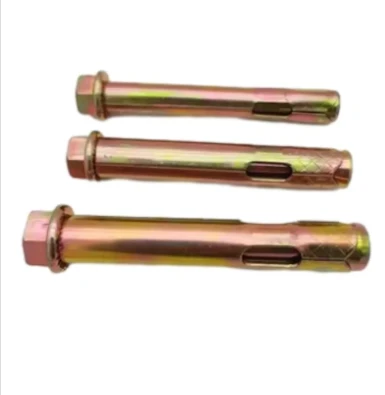Nov . 05, 2024 21:43 Back to list
hexagonal head
The Versatility and Importance of Hexagonal Head Fasteners
In the vast world of fastening technologies, hexagonal head fasteners have carved out a significant niche, combining practicality with the efficiency needed in various applications. These fasteners, characterized by their six-sided heads, offer a range of advantages that make them an essential component in construction, automotive, aerospace, and machinery industries.
Design and Functionality
The hexagonal head design serves a functional purpose, allowing for efficient torque application. This shape facilitates the use of wrenches and sockets, providing a good grip and minimizing the risk of slipping during installation or removal. The larger surface area of the hexagonal head compared to other shapes—such as round or square—enables more torque to be applied, which is critical in applications that require a secure and tight fit.
Hexagonal head fasteners come in various types, including bolts, nuts, and screws. Materials used in their manufacturing range from steel and stainless steel to aluminum and titanium, catering to different environmental and load requirements. The choice of material directly impacts the fastener's strength, corrosion resistance, and overall durability.
Applications Across Industries
In the construction industry, hexagonal head bolts and nuts are commonly employed in structural frameworks, providing the necessary strength to hold buildings together. These fasteners are essential in ensuring that load-bearing structures can withstand the test of time and external pressures such as wind and seismic activity.
The automotive sector also relies heavily on hexagonal head fasteners. From engine components to chassis assembly, these fasteners secure critical parts that contribute to vehicle safety and performance. Manufacturers often prefer hexagonal heads because they can be tightened to precise specifications, reducing the likelihood of loosening during operation.
Similarly, in the aerospace industry, where safety and reliability are paramount, hexagonal fasteners play a crucial role. They are used in aircraft assembly, holding together parts that must endure extreme conditions, including high pressures and temperatures. The ability to produce these fasteners from lightweight yet strong materials, such as titanium, enhances fuel efficiency without sacrificing structural integrity.
hexagonal head

Advantages of Hexagonal Head Fasteners
One of the primary advantages of hexagonal head fasteners is their ability to be reused. Unlike some other types of fasteners, hexagonal heads can withstand multiple cycles of tightening and loosening, making them an economical choice for temporary structures or machinery that requires frequent maintenance.
Another benefit is their compatibility with various tools. The hexagonal shape allows for the use of both manual and power tools, providing flexibility during assembly and disassembly processes. This versatility translates to improved efficiency on job sites, reducing labor time and costs.
Innovations in Fastening Technology
As technology continues to advance, the design and manufacturing of hexagonal head fasteners are evolving. Innovations such as coatings and treatments are enhancing their performance properties. For instance, zinc plating or powder coating can improve corrosion resistance, making them suitable for harsh environments.
Furthermore, the development of computer-aided design (CAD) and simulation tools allows engineers to create custom fasteners that meet specific application requirements, pushing the boundaries of traditional fastening solutions.
Conclusion
Hexagonal head fasteners epitomize functional design and engineering excellence. Their robust nature and adaptability across various sectors make them indispensable in today’s world. Whether in a skyscraper, a car, or an airplane, these fasteners contribute significantly to safety, performance, and longevity. As industries continue to innovate and demand more from their materials, hexagonal head fasteners will undoubtedly remain at the forefront of fastening technology, ensuring that structures and machinery function seamlessly in an ever-evolving landscape.


